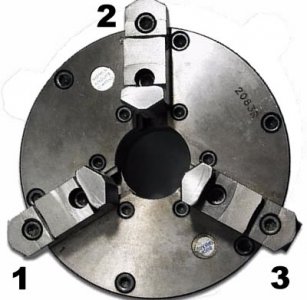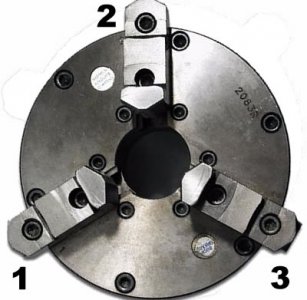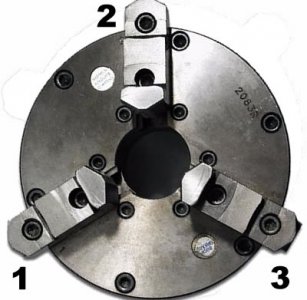- Joined
- Sep 28, 2013
- Messages
- 4,309
do you have any way to lightly face the back of the 3 jaw where it registers against the backplate? I'm not sure how accurate reading off the side of the chuck is in determining run out as it could be several thou out and a test bar could still run perfectly true. Can you mount decent sized true bar in a 4 jaw (even on your 9x20) then stick your 3 jaw on backwards onto the bar, holding on with the jaws? You can then read off the back and the side of the chuck.
At present it sounds that your jaws are not parallel with the bed/ spindle. Could be that your jaws are cocked in the chuck body or that the back of your chuck isn't perpendicular to the spindle. Theoretically, facing the back of the chuck should cure both of those possible problems. I was contemplating this self same problem on the ancient OE chuck that came with my ancient lathe - in the end I just bought a new chuck, although now I have to make a backplate for it..
At present it sounds that your jaws are not parallel with the bed/ spindle. Could be that your jaws are cocked in the chuck body or that the back of your chuck isn't perpendicular to the spindle. Theoretically, facing the back of the chuck should cure both of those possible problems. I was contemplating this self same problem on the ancient OE chuck that came with my ancient lathe - in the end I just bought a new chuck, although now I have to make a backplate for it..




